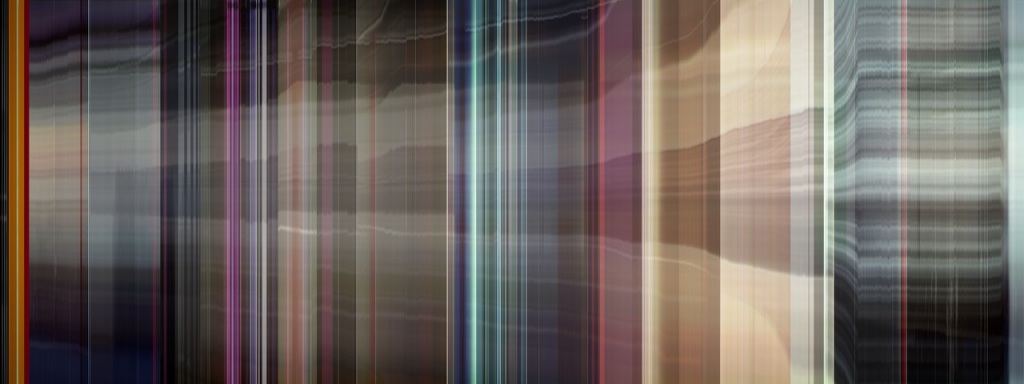Michael Snow screening at Plug In ICA
September 28, 2013 – 6pm to September 29, 2013 – 6am
Plug In Institute of Contemporary Art, in collaboration with WNDX Festival of Moving Image, will be screening Michael Snow’s seminal filmWVLNT (Wavelength for Those Who Don’t Have the Time) on Saturday, September 28th. From 6:00 p.m. to 6:00 a.m, the film will be screening along Plug In ICA’s exterior.
This event will follow a public conversation between artists Dan Graham and Michael Snow at Plug In at 1:30 pm. The talk with be moderated by Plug In ICA Executive | Artistic Director Anthony Kiendl and will be followed by a reception on the Plug In ICA roof terrace from 3:00 pm to 5:00 pm.
With his film Wavelength, Michael Snow revolutionized the international avant-garde film scene like no other production. In WVLNT (Wavelength for Those Who Don’t Have the Time), Snow takes the “destruction” of this influential film into his own hands, dividing the 45 minutes of the original film into three pieces and putting them on top of each other, thus creating a new, independent work while initiating a (re)thinking of the presentation of experimental film under today’s conditions.
Michael Snow is considered one of Canada’s most important living artists, and one of the world’s leading experimental filmmakers. His wide-ranging and multidisciplinary oeuvre explores the possibilities inherent in different mediums and genres, and encompasses film and video, painting, sculpture, photography, writing, and music. Snow’s practice comprises a thorough investigation into the nature of perception.
While Snow early established himself as a successful painter and musician in his native Toronto, it was his 1962 move to New York City that marked the beginning of his rise to international prominence. He entered into a long-lasting and fruitful dialogue with downtown Manhattan’s artistic avant garde, exchanging ideas with figures such as Yvonne Rainer, Philip Glass, Sol LeWitt, and Richard Foreman, and developing of some of his most ambitious and influential works to date. His 1964 filmNew York Eye and Ear Control documents his growing involvement with the burgeoning free jazz movement, and the soundtrack boasts a lineup that includes Albert Ayler, Don Cherry, and Sonny Murray. Snow would continue to pursue improvised music, both on his own and in ensembles such as Toronto’s CCMC. The generation and reception of sound in the broader sense emerged as one of his main concerns, reflected in performance and tape works that share qualities with contemporaneous experiments by composers like Steve Reich.
At the same time, Snow made alliances within the underground film scene centered around Jonas Mekas’ Filmmakers’ Cinematheque, an experience that encouraged him to find ways to transfer his concerns with music and photography into the realm of the moving image. He assisted Hollis Frampton on films such as Nostalgia(1971), and it was legendary director Ken Jacobs whose loan of equipment helped Snow create his most famous and influential work, the groundbreaking 1967 film Wavelength.Wavelength, which notoriously includes a 45-minute camera zoom within a fixed frame, remains one of the most studied and admired works of structuralist filmmaking. Other of Snow’s films of this period, including Back and Forth (1969) andLa Région Centrale (1971) similarly explored the mechanics of filmmaking to simultaneously investigate the functional processes of cinema and of thinking itself.
In the 1970s and 1980s, Snow, responding to a growing institutional commitment to his work, experimented more with large-scale installations, including public sculptures such as Flightstop (1979) and The Audience (1988-89). In recent years, he has focused on the specific nature and potential of digital media, yielding works like the video-film *Corpus Callosum (2002). Regardless of artistic genre, Snow consistently engages in an analytical discourse on the nature of consciousness and experience, language and temporality.
Michael Snow was born in Toronto, Canada in 1929. He studied at Ontario College of Art. Among his many awards are a Guggenheim Fellowship, the Order of Canada, and two Los Angeles Film Critics Awards. Snow has had solo exhibitions at the Art Gallery of Ontario, Toronto; XXV Venice Biennale; The Museum of Modern Art, New York; Centre George Pompidou, Paris; Kunstmuseum, Luzern, Switzerland; List Gallery, MIT, Cambridge, Massachusetts; Hara Museum of Contemporary Art, Tokyo; The Power Plant, Toronto; Musée d’Art Contemporain, Montréal; and Macedonian Museum of Contemporary Art, Thessaloniki, among others. His group shows include the London, Cannes, Tokyo, Berlin, New York and Toronto film festivals; Whitney Museum of American Art, New York; Documenta 6, Kassel; Musée Carnavalet, Paris; and Museum of Contemporary Art, Los Angeles. Snow has had film retrospectives at Pacific Film Archive, San Francisco; Walker Art Center, Minneapolis; Osterreichisches Film Museum, Vienna; Image Forum, Tokyo; Cinémathèque Française, Paris; and Cinémathèque Royale de Belgique, Brussels, among many others. He has taught at Yale University, Princeton University, Ecole Nationale de la Photographie, Arles, France; Ecole Nationale Supérieure des Beaux-Arts, Paris; and le Fresnoy, Tourcoing, France, and has received Snow has received honorary degrees from Nova Scotia College of Art And Design; University of Toronto, and Université de Paris 1, Panthéon Sorbonne, among others.



